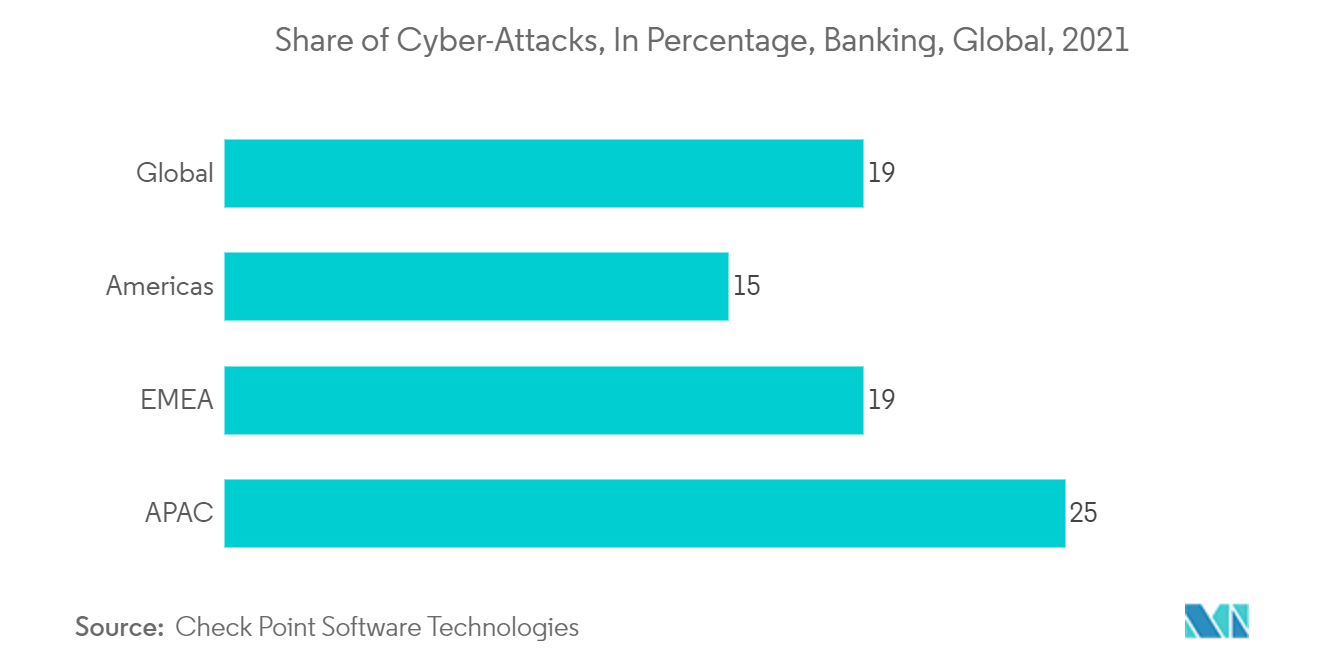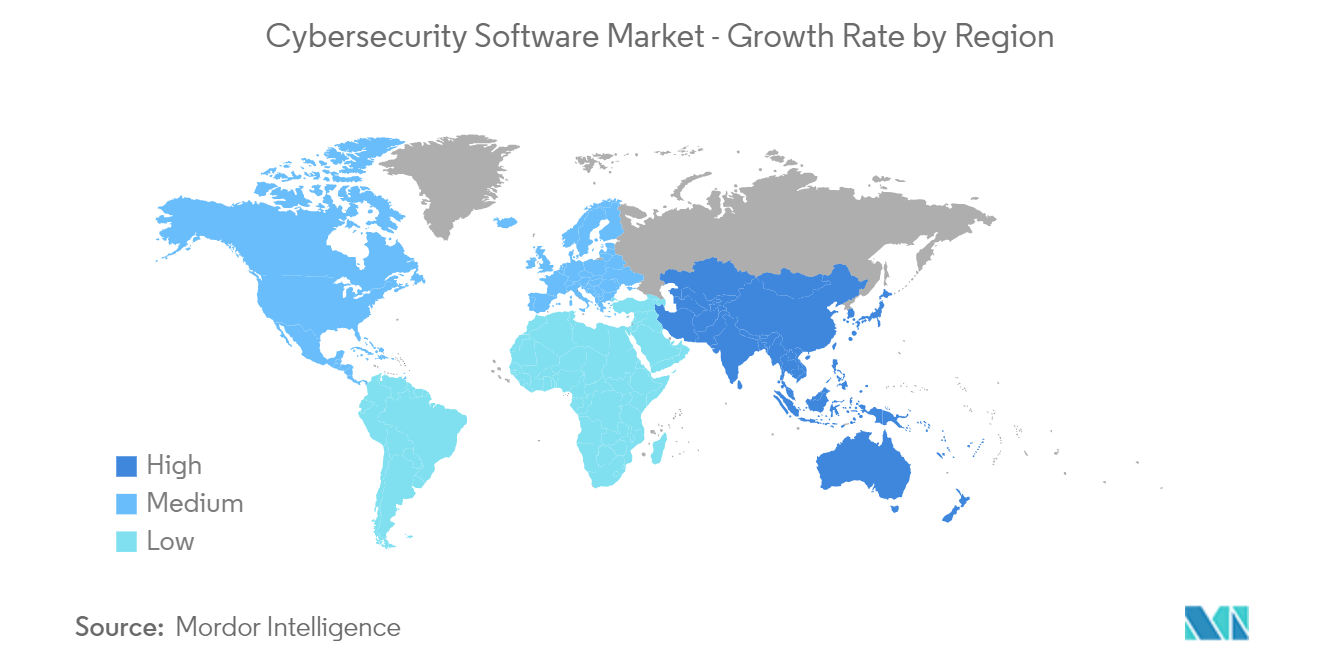Market Trends of Cybersecurity Software Industry
This section covers the major market trends shaping the Cybersecurity Software Market according to our research experts:
The BFSI End-User Segment is Expected to Witness Significant Growth
- The BFSI industry is one of the critical infrastructure segments that face multiple data breaches and cyber-attacks, owing to the massive customer base that the sector serves and the financial information that is at stake. As a highly lucrative operation model with phenomenal returns and the added upside of relatively low risk and detectability, cybercriminals are optimizing various diabolical cyberattacks to immobilize the financial sector. These attacks' threat landscape ranges from Trojans, ATMs, ransomware, mobile banking malware data breaches, institutional invasion, data thefts, fiscal breaches, etc.
- Public and private banking institutes are focusing on implementing the latest technology to prevent cyber attacks with a strategy to secure their IT processes and systems, secure customer critical data, and comply with government regulations. Besides, banking institutions are pushed to adopt a proactive security approach with greater customer expectations, rising technological capabilities, and regulatory requirements. With the growing technological penetration and digital channels, such as internet banking, mobile banking, etc., online banking has become customers' preferred choice for banking services. There is a significant need for banks to leverage advanced authentication and access control processes.
- In February last year, the Department of Justice (DoJ) and industry group Bankers Association of the Philippines (BAP) signed a memorandum of understanding (MoU) to raise cybersecurity awareness and combat cybercrime in the Philippines. The BAP aims to strengthen the banking industry's cyber-resilience and develop a collaborative partnership with the Justice Department to achieve a coordinated, collective, and strategic cyber response through information sharing and collaboration in the wake of rising cybercrime incidents in the country.
- In the last year, financial firms worldwide were impacted by innovative new ransomware tactics that maximized ROI for the threat actors. While financial firms represent a small percentage of victims directly targeted by ransomware attacks, they can and have been impacted by attacks on third parties, who are prime targets. Such threats are poised to increase the usage of cybersecurity software services in the BFSI sector.
- Over the past few years, several technology start-ups specializing in the financial segment have emerged, disrupting how they make purchases. For instance, in India, from app-based wallets and Aadhaar/UPI-linked instant transactions to single-window e-commerce apps, fintech start-ups need to be mindful of the threats and invest in creating a robust data security framework for the apps. This needs to be addressed as these may be boot-strapped start-ups and generally avoid the hefty investment required for a more than essential digitally secure ecosystem. This needs to be addressed by collaboration with cybersecurity firms that provide customized and value-driven services against the big-budget packages.

North America is Expected to Hold Significant Share
- North America is presumed to be the most significant revenue-generating region, as there is a particular focus on innovations in the US and Canada. These nations have the world's most competitive and quickly changing consumer data platform markets. A higher rate of infrastructure growth and the massive growth of data from all industry verticals are expected to make North America one of the top potential markets for growth.
- The presence of significant cybersecurity software providers with headquarters in North America also drives the market growth in this region.
- Healthcare cybersecurity crimes are on the rise in the US and continue to be one of the major concerns in the country, fueling firms to drive solutions in the market.
- The Health Insurance Portability and Accountability Act, a federal statute of the United States, reported the increase of breaches by 25% year-over-year in 2020 in the Healthcare Data Breach Report published in January last year, with 29,298,012 healthcare records breached.
- Increased investments in the industry mark the country for cybersecurity solutions and cyber threat-detecting software and platforms. With the increased awareness amongst companies spanning from small to large enterprises, US companies are deploying stricter solutions to protect data and installing fraud and threat detection programs to find risks at an earlier stage to respond at an earlier stage driving the injection of funds into the industry. For instance, Horizon3.ai, a cybersecurity company based in California, raised an investment of USD 5 million in the Series A round of investment which SignalFireled.
- In Canada, cybercrime is rapidly gaining traction, and the impact is increasing at an alarming rate. In December 2021, Ministry for Government Digital Transformation, Quebec, revealed that they would shut down close to 4,000 government websites following the threat of an international cyberattack on a widely used logging system. According to the ministry, around 3,992 provincial government websites could be at risk, including those related to health, education, and public administration.

